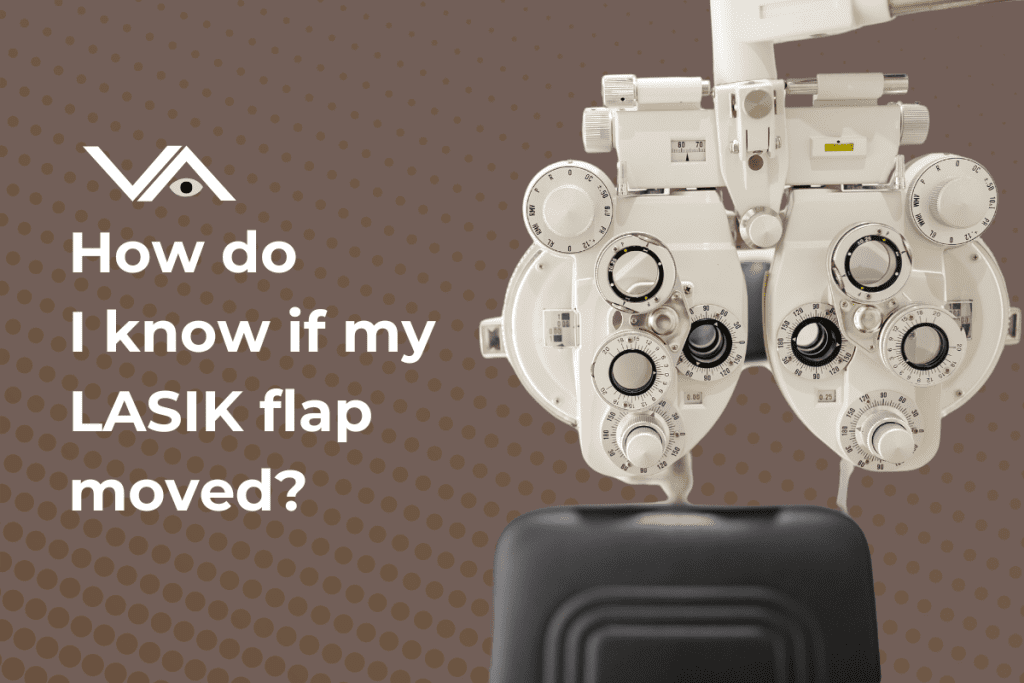Table of Contents
ToggleLASIK surgery, renowned for offering a dramatic improvement in vision without the need for glasses or contact lenses, is a marvel of modern medical technology. Yet, a rare but concerning possibility for those who undergo the procedure is the dislocation of the corneal flap, a condition known as LASIK flap dislocation, which requires immediate medical attention.
Though the risk of flap displacement is minimal—occurring in only about 1% to 2% of cases—it’s crucial for patients to be well-informed about the signs and symptoms, as well as to understand the importance of immediate action.
This guide aims to empower LASIK patients with knowledge and awareness, ensuring they are prepared to handle such situations should they arise.

Understanding LASIK Flap Dislocation
The Flap’s Role in LASIK: In the LASIK procedure, a thin flap in the cornea (the clear, front surface of the eye) is created using either a microkeratome blade or a femtosecond laser. This flap is then lifted, allowing another laser to reshape the underlying corneal tissue to correct vision. This flap is expected to heal and reattach naturally, without stitches, clearing the path for improved vision.
When Healing Goes Awry: In rare circumstances, external factors or complications in the healing process can lead to the dislodgement of the flap from its correct position.
Risk Factors:
Certain factors can increase the chances of flap dislocation, including:
- Accidental Trauma: A blow or impact to the eye during the healing period.
- Eye Rubbing: This can dislodge the flap, especially if not careful.
- Certain Medical Conditions: Dry eye syndrome or connective tissue diseases can affect healing.
Warning Signs That Demand Immediate Attention:
Experiencing any of the following symptoms after LASIK surgery necessitates immediate medical attention:
- Intense and Persistent Pain: A sudden and sharp pain in the affected eye is a telltale sign of potential flap dislocation.
- Excessive Tearing: The eye will likely produce a constant flow of tears in an attempt to flush out any irritants caused by the displaced flap.
- Blurred Vision: This can range from moderate blurring to complete vision loss in the affected eye. Crucially, this can be differentiated from the initial blurry vision experienced post-surgery, which usually resolves within a few days.
- Light Sensitivity: Even dim light can become intensely bothersome due to the disrupted corneal structure caused by the dislodged flap.
Critical Steps to Take:
The Window of Risk: LASIK flap dislocation is most likely to occur within the first few days following surgery. This highlights the critical importance of strictly adhering to the post-operative care instructions provided by your ophthalmologist.
Seeking Help: Should you experience any of the symptoms listed, it’s crucial to contact your ophthalmologist immediately or visit an emergency department specialising in eye care. Prompt action can be the key to preserving your vision and preventing further complications.
Preventive Measures:
Following your ophthalmologist’s post-operative care instructions diligently is vital for proper healing and reducing the risk of flap dislocation. Here are some key measures:
- Protective Eye Shields: Wearing protective eye shields, especially while sleeping in the initial days after surgery, safeguards your eye from accidental bumps or rubbing.
- Avoiding Strenuous Activities: Your doctor will advise you to avoid strenuous activities, physical exercise, and swimming for a specific period to allow for proper healing.
- Refraining from Eye Rubbing: This can dislodge the healing flap, potentially leading to complications.
- Regular Follow-Up Appointments: Attending scheduled checkups with your ophthalmologist allows them to closely monitor your healing progress and address any concerns promptly.
What Doesn’t Indicate Flap Movement:
- Self-Diagnosis Based on Vision Alone: While blurred vision can be a symptom of flap dislocation, it’s important to remember that it can also occur due to other factors like post-surgical adjustments or unrelated eye conditions. Relying solely on blurred vision for self-diagnosis is risky.
- Self-Examination: Never attempt to examine your eye yourself. The cornea is a delicate structure, and any manipulation could worsen the situation. If you have any concerns, consult your ophthalmologist immediately.
Beyond the Basics:
Potential Complications: Untreated flap dislocation can lead to serious complications, including:
- Vision Loss: Permanent vision impairment can occur if the flap is not repositioned promptly.
- Corneal Infection: The displaced flap can create an entry point for bacteria, increasing the risk of infection.
- Irregular Corneal Shape: This can lead to significant vision distortion.
The Importance of Communication:
Before undergoing LASIK, it’s important to address any concerns with your ophthalmologist. A comprehensive understanding of the procedure, potential risks, and how to manage complications is vital for every patient. By sharing your lifestyle and interests with your ophthalmologist pre-surgery, they can customise post-operative care instructions and provide guidance on adjusting activities during the recovery phase.
Final Thoughts:
Though LASIK surgery has become an exceedingly safe and effective means of correcting vision, like any surgical procedure, it carries some risks. Being informed and prepared can make all the difference in ensuring the health of your eyes post-LASIK.
If you suspect that your LASIK flap has moved, do not hesitate; seek medical attention immediately.









